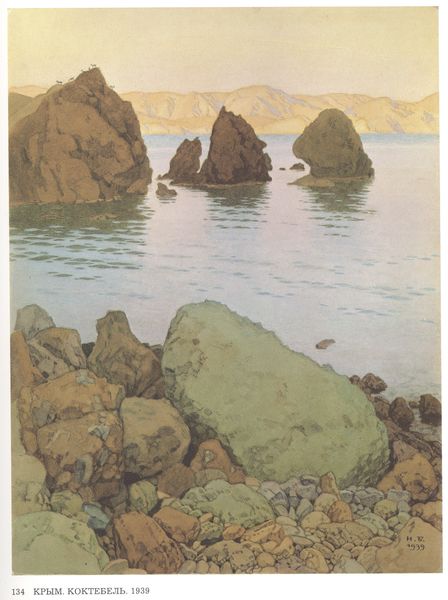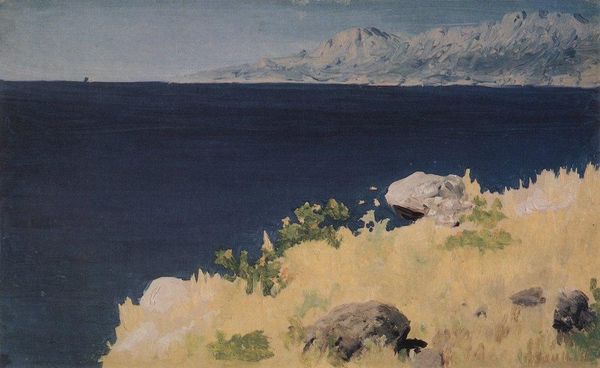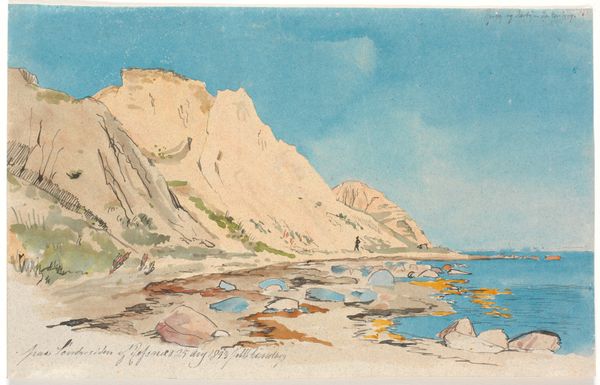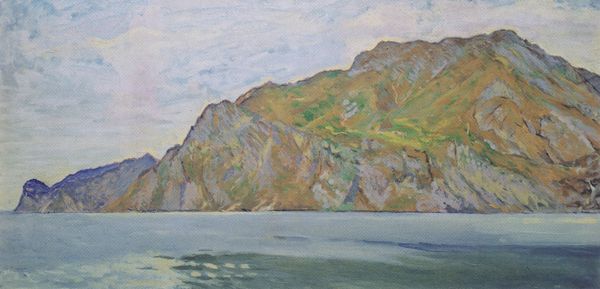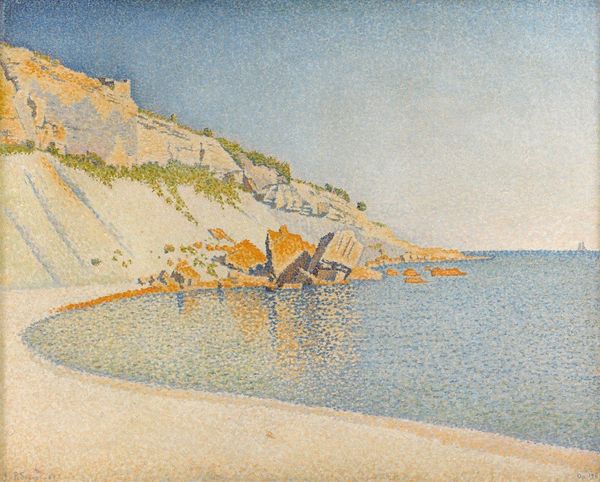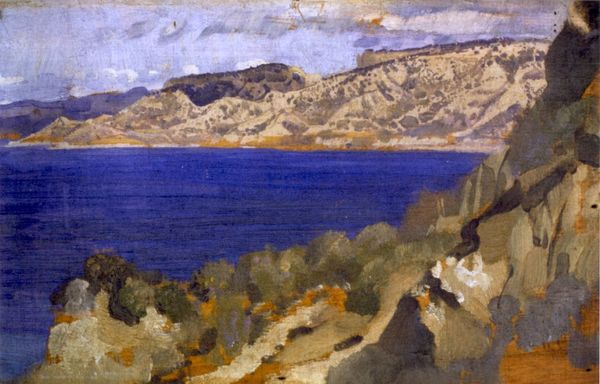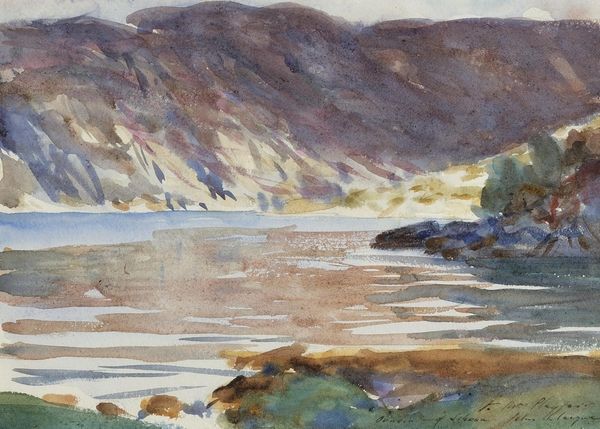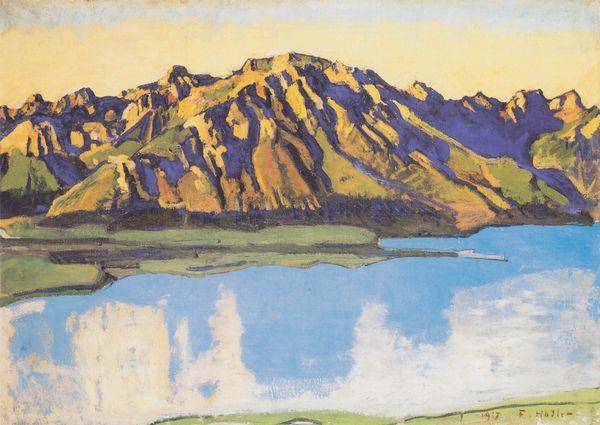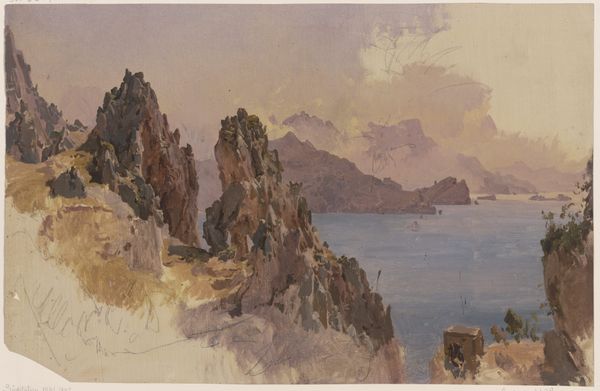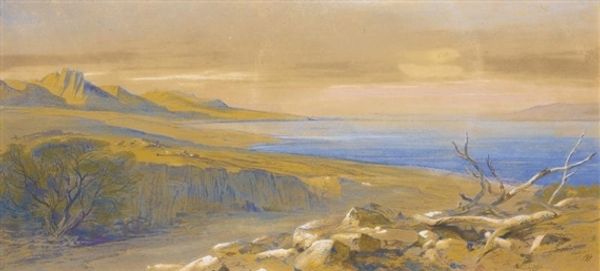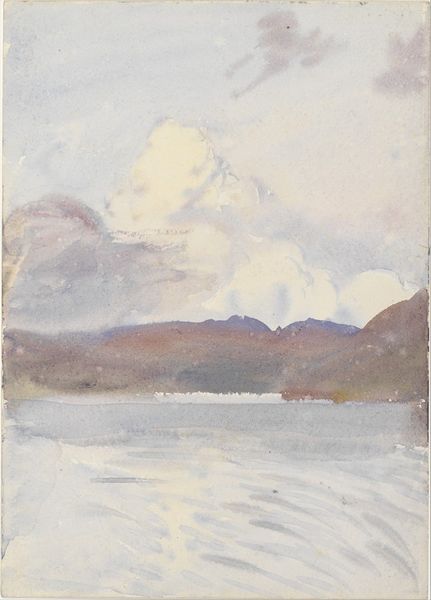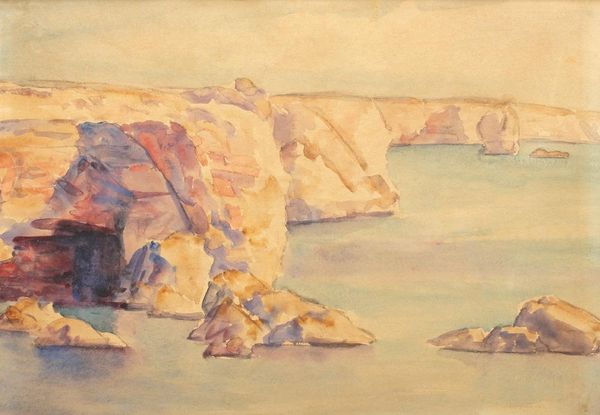
Copyright: Public domain
Editor: This is Ivan Bilibin's "Crimea. Batiliman," painted in 1940, supposedly en plein air and in watercolor. I am immediately struck by the heavy use of rock as subject matter and its presentation; the artist doesn't shy away from its crude monumentality! What are your first impressions? Curator: The prevalence of rocks in this "Crimea. Batiliman," presented during a tumultuous year like 1940, directs us to consider its material composition beyond just watercolor on paper. Consider Crimea’s complicated historical position as the Soviet empire consolidated. Do you not think the very labor of extracting and forming those rocks – by natural means, surely, yet present in the final view – whispers of labour and extraction in the political sense? Editor: I hadn’t thought of that at all! So, you’re suggesting the painting's value comes not just from its aesthetic quality, but from its inherent connection to labor and the manipulation of materials? I suppose the rocks aren’t merely representational here, but almost… evidence? Curator: Precisely. Each visible stroke, each carefully rendered stone, acts as a record of artistic and geological effort. How the watercolour interacts with the textured paper mimics natural erosion, doesn’t it? Consider what that implies: the tools available, the social pressures to reflect something honest of ‘Crimea’, the artist's intention… they become materially grounded by this confluence. Editor: It is making me reconsider the artist's perspective, and their role. Thank you! Curator: And likewise! It makes one look beyond the prettiness and wonder what all the rock actually means, in human terms.
Comments
No comments
Be the first to comment and join the conversation on the ultimate creative platform.
